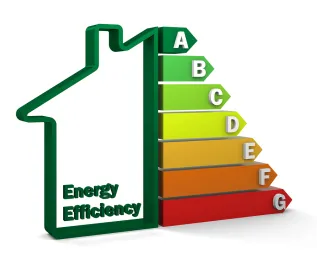Introduction
Beginning January 2023, energy labels of the major part of office buildings in the Netherlands will have to be at least in category C, because of an amendment to the Dutch Buildings Decree 2012 (Bouwbesluit 2012), published 2 November 2018. This generally means that owners of office buildings with energy labels from D to G (or without any energy label) should quickly implement energy-saving measures to comply with this obligation.
Background
Since 1 January 2008, energy labels for nonresidential buildings (e.g., office buildings, schools, hospitals) have been mandatory when selling, letting, or transferring such buildings. A similar obligation exists for residential buildings in the Netherlands.
An energy label demonstrates the energy performance of a building. It also includes a standard of which energy-saving measures need to be taken to improve energy performance. The lower the energy label, the more energy-saving measures may be required to obtain a better energy label and to improve the energy performance of a building. The label categories range from A to G, with G being the lowest in terms of energy performance and having the most energy-saving measures needed to obtain a higher energy label.
At present, having an energy label in place is mandatory regardless of the category. Starting in 2023, however, stricter regulations will apply to office buildings concerning energy labels. These stricter regulations will be implemented in the Dutch Buildings Decree 2012.
New Requirements for 2023
Starting 1 January 2023, office buildings must have an energy label in category C or higher. The use of office buildings with an energy label below C will be prohibited as of that date. Exceptions will apply in the following circumstances:
-
the office building is part of a (larger) building and the total usable area for office functions is less than 50 percent of the total usable surface area of that building;
-
the total usable area for office functions and ancillary functions in the office building or the building in which the office building is a part is less than 100 square metres;
-
an office building that is mentioned in Article 2.2 Energy Performance Buildings Decree (Besluit energieprestatie gebouwen). Important exceptions based on this article 2.2 are:
-
an office building that is a national monument;
-
an office building that is only used for a maximum of two years.
-
Office space owners who can demonstrate that, before 1 January 2023, they have taken all measures needed to realize an energy label in category C with an earn-back-period of up to 10 years, can get by with an energy label lower than category C. The application of this provision and especially the application of the earn-back-period are not clearly explained in the amendment to the Dutch Buildings Decree 2012. It is, moreover, unclear how the effect of this provision will be enforced by the relevant authorities.
Consequences of the Energy Label C Obligation
The abovementioned amendments follow from the Energy Agreement (het Energieakkoord) for sustainable growth of 2013. This Energy Agreement aims to, among other things, limit CO2 emissions and save energy consumption in the Netherlands.
In practice we see that office buildings with energy label D, E, or F could, generally speaking, achieve a label C without major renovations (e.g., by lighting or heating measures). For office buildings with an energy label G, more drastic measures may be necessary.
Tenancy
A tenant is not responsible for compliance with the energy label C obligation with respect to the authorities. However, contractual stipulations in the lease agreement may require the tenant to be responsible for or cooperate with taking energy saving measures (e.g., in the case of a shell lease).
(Office) building tenants should inform or remind their landlords of the energy label obligation in a timely manner, as it will be prohibited to use noncompliant office buildings starting 1 January 2023. Furthermore, the execution of energy-saving measures could temporarily interfere with the use and occupation of an office building. Tenants should plan the execution of any measures with the owner/landlord. In addition, owners should communicate with their tenants about the planned energy-saving measures and how to prevent nuisance for the tenant as much as possible.
Sanctions
Starting 1 January 2023, it will be prohibited to use an office building that does not have an energy label C and is not exempted from this obligation. Violations of the energy label-obligation may result in administrative enforcement actions or criminal enforcement actions. This could lead to the imposition of an order subject to a penalty (last onder dwangsom), an administrative enforcement order (last onder bestuursdwang), or administrative fines (bestuursrechtelijke boete).
For the Future
The Energy Agreement aims for an energy label A requirement for the use of office buildings in 2030. Further legislation will likely follow to achieve this goal. Owners of office buildings should take this into account when investing in measures to upgrade their energy label.
contributed to this post.



 />i
/>i

